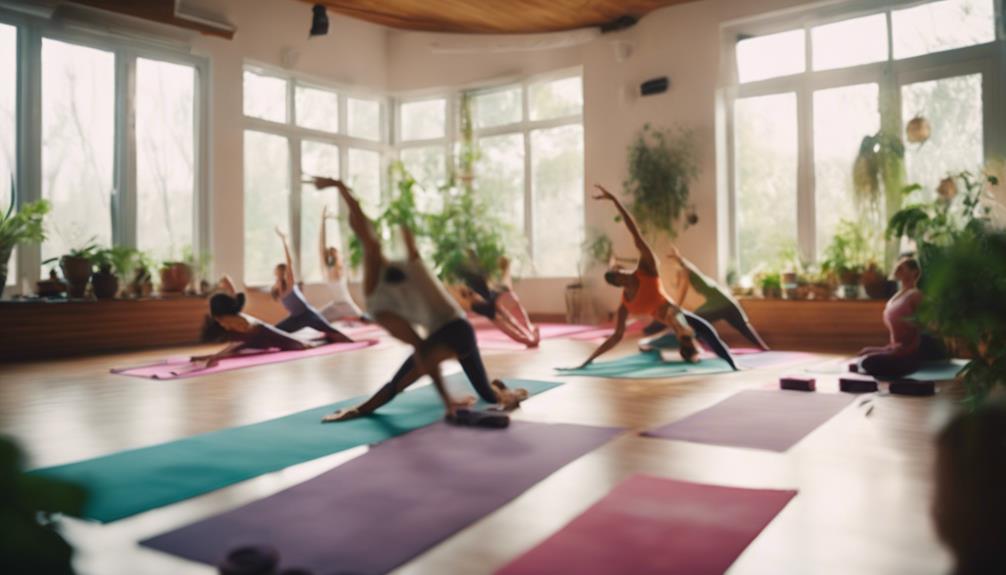What Is The Difference In Yoga And Pilates

Yoga and Pilates are two popular forms of exercise that focus on enhancing physical and mental well-being. While they share some similarities, they also have distinct differences that cater to varied fitness goals and preferences. In this comprehensive guide, we will explore the key differences between yoga and Pilates, helping you to better understand which practice might be best for you.
What is Yoga? An Overview
Yoga is an ancient practice that originated in India over 5,000 years ago. It combines physical postures (asanas), breathing techniques (pranayama), and meditation to promote overall health and well-being. The primary goal of yoga is to cultivate a connection between the body, mind, and spirit. There are various styles of yoga, including Hatha, Vinyasa, Ashtanga, and Yin, each offering unique approaches to movement and mindfulness. Yoga not only enhances flexibility and strength but also fosters mental clarity and emotional balance.
What is Pilates? An Overview
Pilates, on the other hand, was developed in the early 20th century by Joseph Pilates in Germany. It focuses on core strength, flexibility, and overall body awareness through controlled movements and precise techniques. Pilates exercises are often performed on a mat or specialized equipment, such as the Reformer, which adds resistance to the movements. The primary aim of Pilates is to improve posture, balance, and coordination, making it an excellent choice for rehabilitation and injury prevention. Unlike yoga, Pilates does not incorporate spiritual elements, making it more of a fitness-focused discipline.
Key Differences in Philosophy and Purpose
The primary distinction between yoga and Pilates lies in their underlying philosophies and purposes. Yoga is a holistic practice that emphasizes harmony between the body, mind, and spirit. It encourages practitioners to focus on mindfulness, self-awareness, and inner peace. In contrast, Pilates is more focused on physical fitness and rehabilitation. The exercises are designed to strengthen the core muscles, improve posture, and enhance overall physical performance. While both practices promote mindfulness, yoga incorporates a more spiritual aspect, whereas Pilates is grounded in physical conditioning.
Movement Styles: Flow vs. Control
Another significant difference between yoga and Pilates is the movement style. Yoga often involves flowing sequences of poses that are linked by breath, creating a dynamic practice. For instance, Vinyasa yoga emphasizes the synchronization of breath with movement, allowing for a fluid transition between postures. Conversely, Pilates emphasizes controlled movements that are precise and intentional. Each exercise is designed to target specific muscle groups, with a strong focus on alignment and form. This difference in movement styles can influence which practice individuals prefer based on their fitness goals.
Focus on Breathing Techniques
Breathing plays an essential role in both yoga and Pilates, but the techniques employed differ. In yoga, breath control (pranayama) is a fundamental aspect of the practice. Practitioners learn to use their breath to enhance their movements, deepen their stretches, and cultivate a sense of calm. Various breathing techniques are taught to help manage stress and promote relaxation. In Pilates, breath is used to facilitate movement and support the core. Inhale and exhale cues are integrated into the exercises, but the focus is less on the spiritual aspects of breath and more on its function in physical performance.
Benefits of Yoga: Mind, Body, and Spirit
The benefits of yoga extend beyond just physical fitness. Practicing yoga can lead to increased flexibility, strength, and balance, but it also promotes mental well-being. Many individuals report reduced stress, improved mood, and enhanced focus due to regular yoga practice. Additionally, yoga fosters a sense of community and connection among practitioners, often leading to a supportive and nurturing environment. For those seeking a comprehensive approach to health that includes both physical and mental benefits, yoga may be the ideal choice.
Benefits of Pilates: Core Strength and Rehabilitation
Pilates is well-known for its focus on core strength and rehabilitation. It effectively targets the muscles of the abdomen, lower back, hips, and buttocks, which are essential for maintaining good posture and preventing injuries. Many athletes and dancers incorporate Pilates into their training regimens to improve performance and enhance body awareness. Additionally, Pilates can be beneficial for individuals recovering from injuries, as the exercises are low-impact and can be modified to suit various fitness levels. If you are primarily looking to build core strength and improve physical conditioning, Pilates may be the better option.
Choosing the Right Practice for You
When deciding between yoga and Pilates, it is essential to consider your personal fitness goals, preferences, and any physical limitations you may have. If you are seeking a practice that emphasizes mindfulness, relaxation, and spiritual growth, yoga may be the perfect fit. On the other hand, if your focus is on building core strength, improving flexibility, and enhancing overall physical performance, Pilates could be the more suitable choice. Many individuals find value in incorporating both practices into their fitness routines, as they complement each other well and provide a balanced approach to health and wellness.
In conclusion, while yoga and Pilates share some similarities, their differences in philosophy, movement styles, and benefits set them apart. Understanding these distinctions can help you make an informed decision about which practice aligns best with your fitness goals and lifestyle. Whether you choose to embrace the holistic approach of yoga or the focused conditioning of Pilates, both practices offer valuable tools for enhancing your physical and mental well-being.Are Leggings The Same As Yoga PantsSadhguru YogaCan Hot Yoga Make You Lose Weight